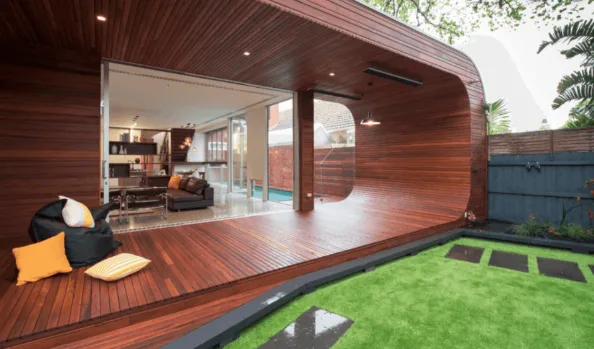While many deck builders and DIYers still use wood decking, alternative materials are exploding in popularity Market researchers at Principia predict that within the next few years composites and PVC will represent 40 percent of total value of decking sold. As they explain, "The innovative products provide superior weathering properties, highly attractive aesthetics and ultra-low maintenance." If you've decided that an alternative to wood decking is right for you, you might wonder how to choose between composite and vinyl (PVC) decking. Read on for insights into PVC vs. composite decking.
Alternative decking options in brief
Composite decking
Manufacturers produce composites by mixing plastics and wood fibre and extruding the material into boards. The wood fibre provides strength, while the plastic helps protect the wood from moisture. Composites can be made from either recycled or virgin ingredients. Inventors originally developed composites as moisture-resistant components for window and door frames. A key downside to composites is brands that do not fully encapsulate the wood fibres in plastic, as MoistureShield does, are at risk for field failures such as cracking, warping or rotting.

PVC decking
The name "PVC" is short for polyvinyl chloride, and is also simply called "vinyl." One of the most common plastics in the world, PVC is widely used in packaging, as well as building materials ranging from pipes and window frames to decking. Vinyl decking pros and cons include: being fully recyclable and insect-resistant, yet expanding and contracting in hot climates, which can loosen fasteners. Another vinyl decking problem is becoming uncomfortably hot in sunny climates.
Head-to-head vinyl vs. composite decking
Although the two decking types share some similarities, there are important differences to consider when choosing PVC vs. composite decking.
Similarities
Both vinyl decking and composites are available throughout North America from several manufacturers — offering builders and DIYers a range of brand choices. Both decking types come in many different colours and do not require painting, staining or sealing, as wood decking does.
Differences
A key factor to consider for vinyl vs. composite decking is the way the materials look. As they contain wood fibre, composites more closely resemble wood, which many homeowners like, while a vinyl decking problem is looking too much like plastic, in some cases.
Another advantage of composites is they are easier to work with than PVC is. Composite boards can be ripped, routed and bent (after heating), while PVC decking can neither be ripped the length of the board, nor routed on the edges, and are more limited in bending.
Finally, it is important to consider cost. Composites and PVC typically cost more than wood decking does since they are higher-performance products. While both of these wood alternatives are available in a range of prices, PVC decking tends to be significantly more expensive than composites.
